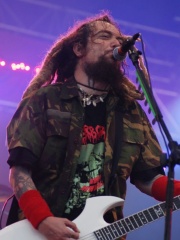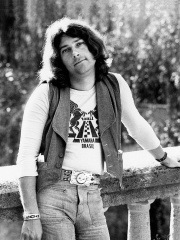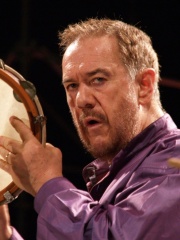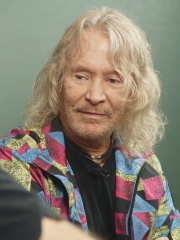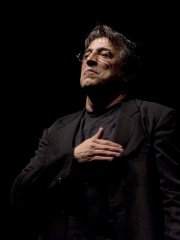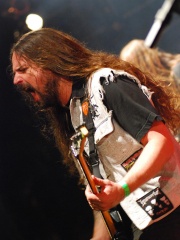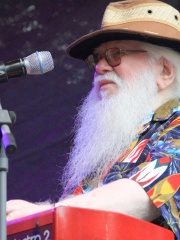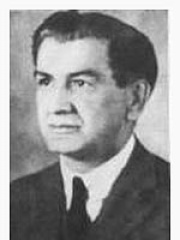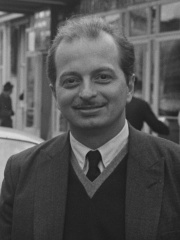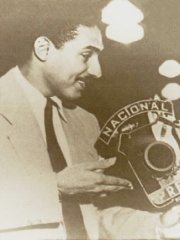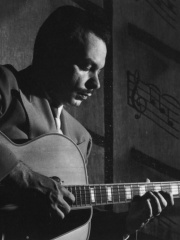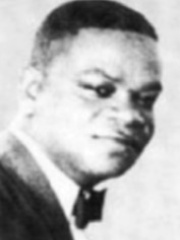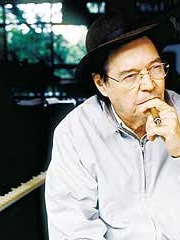
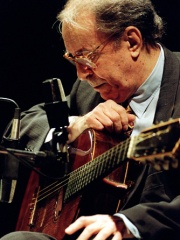
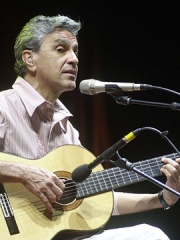
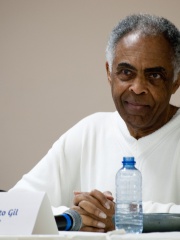
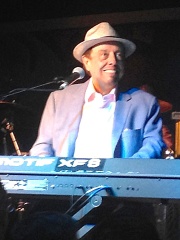
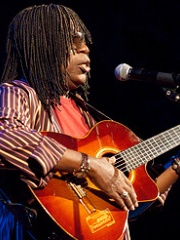
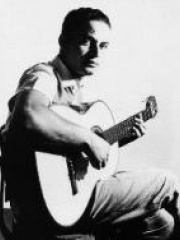
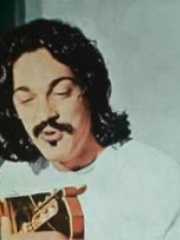
The Most Famous
MUSICIANS from Brazil
This page contains a list of the greatest Brazilian Musicians. The pantheon dataset contains 3,175 Musicians, 39 of which were born in Brazil. This makes Brazil the birth place of the 14th most number of Musicians behind Ukraine, and Netherlands.
Top 10
The following people are considered by Pantheon to be the top 10 most legendary Brazilian Musicians of all time. This list of famous Brazilian Musicians is sorted by HPI (Historical Popularity Index), a metric that aggregates information on a biography's online popularity. Visit the rankings page to view the entire list of Brazilian Musicians.

1. Antônio Carlos Jobim (1927 - 1994)
With an HPI of 73.87, Antônio Carlos Jobim is the most famous Brazilian Musician. His biography has been translated into 60 different languages on wikipedia.
Antônio Carlos Brasileiro de Almeida Jobim (25 January 1927 – 8 December 1994), also known as Tom Jobim (Portuguese pronunciation: [tõ ʒoˈbĩ] ), was a Brazilian composer, pianist, guitarist, songwriter, arranger and singer, and is considered one of the great exponents of Brazilian music. Jobim merged samba with cool jazz in the 1960s to create bossa nova, with worldwide success; as a result, he is regarded as one of the fathers of bossa nova, and as one of the most celebrated songwriters of the 20th century. His songs have been performed by many singers and instrumentalists internationally since the early 1960s. In 1965, the album Getz/Gilberto was the first jazz record to win the Grammy Award for Album of the Year. It also won Best Jazz Instrumental Album – Individual or Group and Best Engineered Album, Non-Classical. The album's single "Garota de Ipanema (The Girl from Ipanema)", composed by Jobim, has become one of the most recorded songs of all time, and the album won the Record of the Year. Jobim composed many songs that are now included in jazz and pop standard repertoires. "Garota de Ipanema" has been recorded over 240 times by other artists. His 1967 album with Frank Sinatra, Francis Albert Sinatra & Antônio Carlos Jobim, was nominated for Album of the Year in 1968 and album Antônio Brasileiro was awarded the 1995 Grammy Award for Best Latin Jazz Album.

2. João Gilberto (1931 - 2019)
With an HPI of 71.51, João Gilberto is the 2nd most famous Brazilian Musician. His biography has been translated into 51 different languages.
João Gilberto do Prado Pereira de Oliveira ( zhoo-OWN zhil-BAIR-toh; Portuguese: [ʒuˈɐ̃w ʒiwˈbɛʁtu]; 10 June 1931 – 6 July 2019), known as João Gilberto, was a Brazilian guitarist, singer, and composer who was a pioneer of the musical genre of bossa nova in the late 1950s. Around the world, he was often called the "father of bossa nova"; in his native Brazil, he was referred to as "O Mito" (The Myth). In 1965, the album Getz/Gilberto was the first jazz record to win the Grammy Award for Album of the Year. It also won Best Jazz Instrumental Album – Individual or Group and Best Engineered Album, Non-Classical. Gilberto's Amoroso was nominated for a Grammy in 1978 in the category Best Jazz Vocal Performance. In 2001 he won in the Best World Music Album category with João voz e violão.

3. Caetano Veloso (b. 1942)
With an HPI of 68.24, Caetano Veloso is the 3rd most famous Brazilian Musician. His biography has been translated into 41 different languages.
Caetano Emanuel Viana Teles Veloso (Brazilian Portuguese: [kajˈtɐnu emɐnuˈɛw viˈɐnɐ ˈtɛliz veˈlozu]; born 7 August 1942) is a Brazilian singer-songwriter, musician and political activist. Veloso first became known for his participation in the Brazilian musical movement Tropicália, which encompassed theatre, poetry and music in the 1960s, at the beginning of the Brazilian military dictatorship that took power in 1964. He has remained a constant creative influence and best-selling performing artist and composer ever since. Veloso has won nineteen Brazilian Music Awards, nine Latin Grammy Awards and two Grammy Awards. On 14 November 2012, Veloso was honored as the Latin Recording Academy Person of the Year. Veloso was one of seven children born into the family of José Telles Veloso (commonly known as Seu Zeca), a government official, and Claudionor Viana Telles Veloso (known as Dona Canô). He was born in the city of Santo Amaro da Purificação, in Bahia, a state in northeastern Brazil, but moved to Salvador, the state capital, as a college student in the mid-1960s. Soon after that, Veloso won a music contest and was signed to his first label. He became one of the originators of Tropicália with several like-minded musicians and artists—including his sister Maria Bethânia—in the same period. However, the Brazilian military dictatorship viewed Veloso's music and political action as threatening, and he was arrested, along with fellow musician Gilberto Gil, in 1969. The two eventually were exiled from Brazil and went to London where they lived for two years. In 1972, Veloso moved back to his home country and once again began recording and performing. He later became popular outside Brazil in the 1980s and 1990s.

4. Gilberto Gil (b. 1942)
With an HPI of 67.91, Gilberto Gil is the 4th most famous Brazilian Musician. His biography has been translated into 44 different languages.
Gilberto Passos Gil Moreira (Brazilian Portuguese: [ʒiwˈbɛʁtu ˈʒiw]; born 26 June 1942) is a Brazilian singer-songwriter and politician, known for both his musical innovation and political activism. From 2003 to 2008, he served as Brazil's Minister of Culture in the administration of President Luiz Inácio Lula da Silva. Gil's musical style incorporates an eclectic range of influences, including rock, Brazilian genres including samba, African music, and reggae. Gil started to play music as a child and was a teenager when he joined his first band. He began his career as a bossa nova musician and began to write songs that reflected a focus on political awareness and social activism. He was a key figure in the música popular brasileira and tropicália movements of the 1960s, alongside artists such as longtime collaborator Caetano Veloso. The Brazilian military regime that took power in 1964 saw both Gil and Veloso as a threat, and the two were held for nine months in 1969 before they were told to leave the country. Gil moved to London, but returned to Bahia in 1972 and continued his musical career, while also working as a politician and environmental advocate. His album Quanta Live won Best World Album at the 41st Annual Grammy Awards, and the album Eletracústico won the Best Contemporary World Music Album at the 48th Annual Grammy Awards.

5. Chico Buarque (b. 1944)
With an HPI of 66.34, Chico Buarque is the 5th most famous Brazilian Musician. His biography has been translated into 37 different languages.
Francisco Buarque de Hollanda (born 19 June 1944), popularly known as Chico Buarque (Brazilian Portuguese pronunciation: [ˈʃiku buˈaʁki]), is a Brazilian singer-songwriter, guitarist, composer, playwright, writer, and poet. He is best known for his music, which often includes social, economic, and cultural reflections on Brazil. The firstborn son of Sérgio Buarque de Hollanda, Buarque lived at several locations throughout his childhood, though mostly in Rio de Janeiro, São Paulo, and Rome. He wrote and studied literature as a child and found music through the bossa nova compositions of Tom Jobim and João Gilberto. He performed as a singer and guitarist in the 1960s as well as writing a play that was deemed dangerous by the Brazilian military dictatorship of the time. Buarque, along with several Tropicalist and MPB musicians, was threatened by the Brazilian military government and eventually left Brazil for Italy in 1969. However, he came back to Brazil in 1970 and continued to record, perform, and write, though much of his material was suppressed by government censors. He released several more albums in the 1980s and published three novels in the 1990s and 2000s. In 2019, Buarque was awarded the Camões Prize, the most important prize for literature in the Portuguese language. However, the awarding of the prize was delayed by four years due to actions by Jair Bolsonaro, but Buarque received it in April 2023. He has also won eleven Brazilian Music Awards, the most important prize for Brazilian music.

6. Sérgio Mendes (1941 - 2024)
With an HPI of 65.67, Sérgio Mendes is the 6th most famous Brazilian Musician. His biography has been translated into 41 different languages.
Sérgio Santos Mendes (Brazilian Portuguese: [ˈsɛʁʒju ˈsɐ̃tuz ˈmẽdʒis]; 11 February 1941 – 5 September 2024) was a Brazilian musician. His career took off with worldwide hits by his band Brasil '66. He released 35 albums and was known for playing bossa nova, often mixed with funk. He was nominated for an Oscar for Best Original Song in 2012 as a co-writer of "Real in Rio" from the animated film Rio. Mendes was primarily known in the United States, where his albums were recorded and where most of his touring took place. He was married to Gracinha Leporace, who performed with him from the early 1970s. Mendes collaborated with many artists, including Black Eyed Peas, with whom he re-recorded in 2006 a remake of his 1966 version of the song "Mas que nada", which was a breakthrough hit for him.

7. Milton Nascimento (b. 1942)
With an HPI of 63.76, Milton Nascimento is the 7th most famous Brazilian Musician. His biography has been translated into 28 different languages.
Milton Silva Campos do Nascimento (Portuguese pronunciation: [ˈmiwtõ ˈsiwvɐ ˈkɐ̃pus du nasiˈmẽtu]; born October 26, 1942), also known as Bituca, is a Brazilian singer-songwriter and multi-instrumentalist. Nascimento has recorded 32 studio albums and has won five Grammy Awards, including Best World Music Album for his album Nascimento in 1998, and twelve Brazilian Music Awards. He has collaborated with various artists including Björk, Pat Metheny, Caetano Veloso, and Elis Regina.

8. Baden Powell (1937 - 2000)
With an HPI of 63.42, Baden Powell is the 8th most famous Brazilian Musician. His biography has been translated into 21 different languages.
Baden Powell de Aquino (Brazilian Portuguese: [ˈbadẽ ˈpawew]; 6 August 1937 – 26 September 2000), known professionally as Baden Powell, was a Brazilian virtuoso guitarist and composer. He combined classical techniques with popular harmony and swing. He performed in many styles, including bossa nova, samba, Brazilian jazz, Latin jazz and MPB. He performed on stage during most of his lifetime. Powell composed many pieces for guitar, some of them now considered guitar standards, such as Abração em Madrid, Braziliense, Canto de Ossanha, Casa Velha, Consolação, Horizon, Imagem, Lotus, Samba, Samba em Prelúdio, Samba Triste, Simplesmente, Tristeza e Solidão, and Samba da Benção. He released Os Afro-sambas, a watershed album in MPB, with Vinicius de Moraes in 1966. He is widely regarded as one of the greatest Brazilian guitar players of all time.

9. Toquinho (b. 1946)
With an HPI of 62.92, Toquinho is the 9th most famous Brazilian Musician. His biography has been translated into 28 different languages.
Antônio Pecci Filho (born July 6, 1946), better known as Toquinho (Portuguese pronunciation: [toˈkĩɲu]), is a Brazilian singer and guitarist. He is well known for his collaborations, as composer and performer, with Vinicius de Moraes.
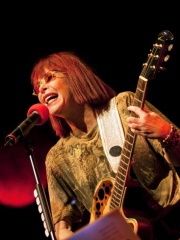
10. Rita Lee (1947 - 2023)
With an HPI of 62.37, Rita Lee is the 10th most famous Brazilian Musician. Her biography has been translated into 33 different languages.
Rita Lee Jones de Carvalho (born Rita Lee Jones; 31 December 1947 – 8 May 2023), known professionally as Rita Lee, was a Brazilian singer, songwriter, multi-instrumentalist, writer, television presenter and activist. Widely regarded as the most influential female figure in Brazilian rock and one of the country's greatest musical innovators, she sold over 55 million records, making her the best-selling Brazilian female artist of all time and the fourth overall. Lee's career was marked by continual reinvention and a fearless blending of genres. Beginning with the psychedelic rock of Os Mutantes (1966–1972), she later explored Tropicália, glam rock, disco, new wave, pop rock, bossa nova, electronic music and acoustic styles, creating a pioneering hybrid of international and national influences. After leading Tutti Frutti (1973–1978), whose 1975 album Fruto Proibido is regarded as the cornerstone of Brazilian rock and was ranked by Rolling Stone Brasil among the greatest albums in Brazilian music history, she achieved her greatest commercial success in the late 1970s and 1980s with a series of albums—Rita Lee (1979), Rita Lee (1980), Saúde (1981) and Rita Lee e Roberto de Carvalho (1982)—that dominated the charts and solidified her as a national icon. From 1976 onward she worked almost exclusively with multi-instrumentalist and composer Roberto de Carvalho, her lifelong romantic and creative partner and father of their three children. Throughout her sixty-year career, Lee's lyrics—often laced with sharp irony and feminist themes—produced enduring hits including "Ovelha Negra", "Agora Só Falta Você", "Mania de Você", "Chega Mais", "Doce Vampiro", "Lança Perfume", "Baila Comigo", "Saúde", "Banho de Espuma", "Flagra", "Erva Venenosa" and "Amor e Sexo". A vegan and outspoken advocate for animal rights, women's rights and the LGBT community, she was nicknamed the "Queen of Brazilian Rock" and "Patron Saint of Liberty". She is the recipient of twelve Brazilian Music Awards, the Latin Grammy Lifetime Achievement Award (2022), the APCA Grand Critics' Prize for Popular Music (2016), the UBC Prize (2024; alongside Carvalho), and Brazil's Order of Cultural Merit (2003) and Order of Rio Branco (2023). Lee retired from touring in 2012 but continued releasing music, books and occasional collaborations until 2021. Diagnosed with lung cancer that year, she died in May 2023 at age 75.
People
Pantheon has 39 people classified as Brazilian musicians born between 1880 and 1993. Of these 39, 25 (64.10%) of them are still alive today. The most famous living Brazilian musicians include Caetano Veloso, Gilberto Gil, and Chico Buarque. The most famous deceased Brazilian musicians include Antônio Carlos Jobim, João Gilberto, and Sérgio Mendes. As of April 2024, 3 new Brazilian musicians have been added to Pantheon including Preta Gil, Gui Boratto, and Marcelo Zarvos.
Living Brazilian Musicians
Go to all RankingsCaetano Veloso
1942 - Present
HPI: 68.24
Gilberto Gil
1942 - Present
HPI: 67.91
Chico Buarque
1944 - Present
HPI: 66.34
Milton Nascimento
1942 - Present
HPI: 63.76
Toquinho
1946 - Present
HPI: 62.92
Max Cavalera
1969 - Present
HPI: 60.70
Eumir Deodato
1942 - Present
HPI: 59.87
Airto Moreira
1941 - Present
HPI: 59.63
Marcos Valle
1943 - Present
HPI: 58.66
Ivan Lins
1945 - Present
HPI: 58.06
Igor Cavalera
1970 - Present
HPI: 56.02
Andreas Kisser
1968 - Present
HPI: 55.38
Deceased Brazilian Musicians
Go to all RankingsAntônio Carlos Jobim
1927 - 1994
HPI: 73.87
João Gilberto
1931 - 2019
HPI: 71.51
Sérgio Mendes
1941 - 2024
HPI: 65.67
Baden Powell
1937 - 2000
HPI: 63.42
Rita Lee
1947 - 2023
HPI: 62.37
Nelson Freire
1944 - 2021
HPI: 62.23
Hermeto Pascoal
1936 - 2025
HPI: 62.16
Zequinha de Abreu
1880 - 1935
HPI: 59.91
Luiz Bonfá
1922 - 2001
HPI: 59.60
Dorival Caymmi
1914 - 2008
HPI: 59.38
Laurindo Almeida
1917 - 1995
HPI: 57.02
Pixinguinha
1897 - 1973
HPI: 55.96
Newly Added Brazilian Musicians (2025)
Go to all RankingsPreta Gil
1974 - 2025
HPI: 54.23
Gui Boratto
1974 - Present
HPI: 44.40
Marcelo Zarvos
1969 - Present
HPI: 41.74
Overlapping Lives
Which Musicians were alive at the same time? This visualization shows the lifespans of the 14 most globally memorable Musicians since 1700.

